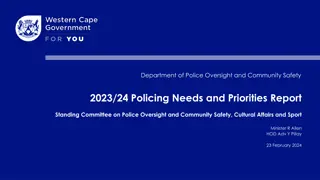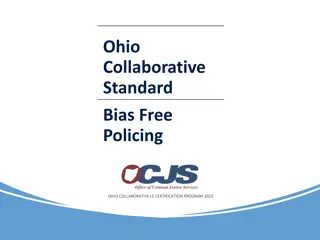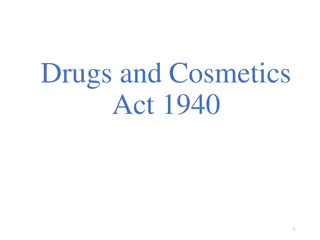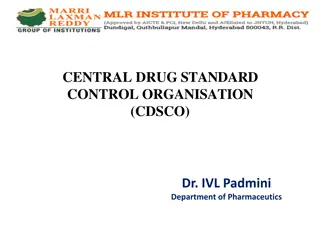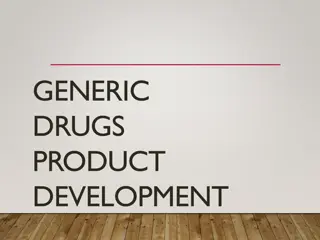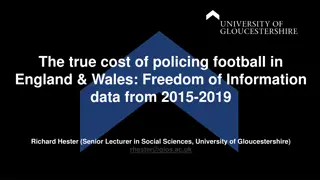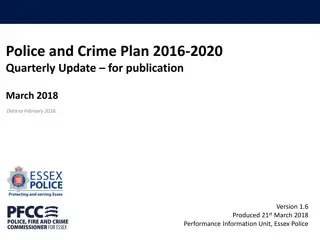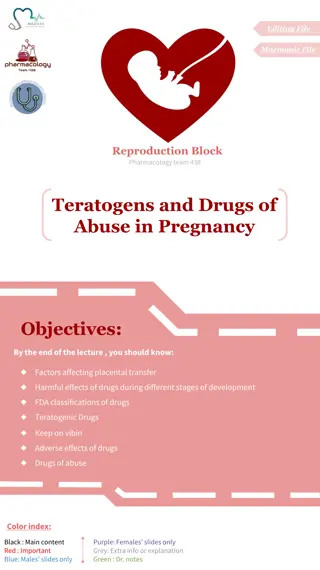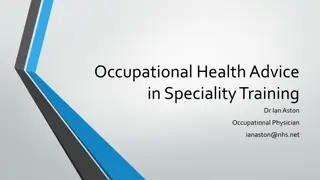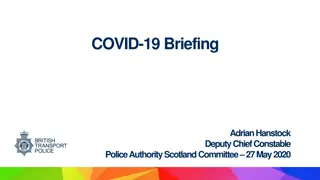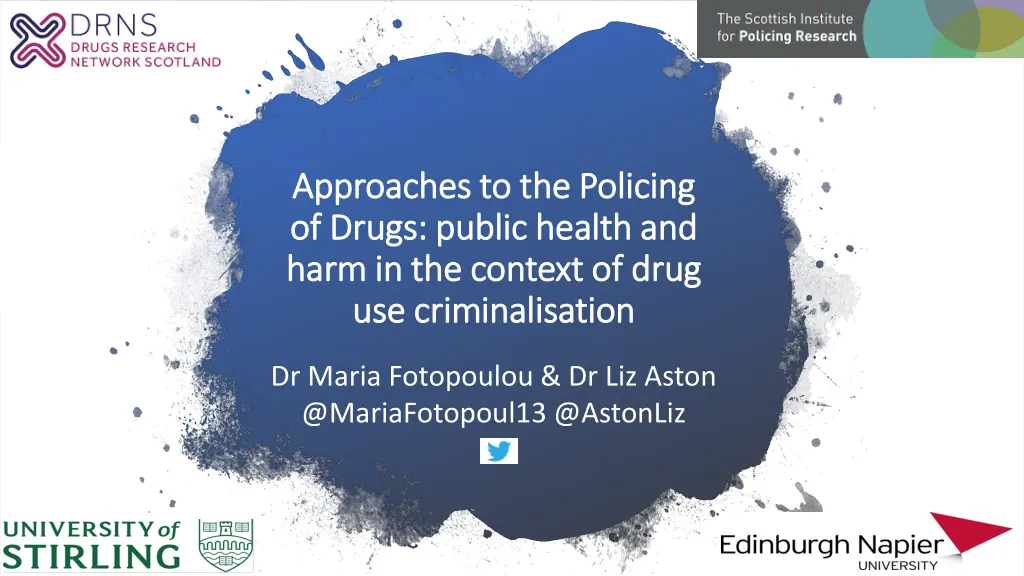
Approaches to Policing of Drugs: Public Health and Harm
Explore the continuum of prohibitionist approaches in drug policing, including international developments and recommendations for decriminalization. Understand how policing is conducted and its impact on public health, with insights from needle and syringe programmes in different countries.
Download Presentation

Please find below an Image/Link to download the presentation.
The content on the website is provided AS IS for your information and personal use only. It may not be sold, licensed, or shared on other websites without obtaining consent from the author. If you encounter any issues during the download, it is possible that the publisher has removed the file from their server.
You are allowed to download the files provided on this website for personal or commercial use, subject to the condition that they are used lawfully. All files are the property of their respective owners.
The content on the website is provided AS IS for your information and personal use only. It may not be sold, licensed, or shared on other websites without obtaining consent from the author.
E N D
Presentation Transcript
Approaches Approaches to the Policing to the Policing of Drugs: public health and of Drugs: public health and harm in the context of drug harm in the context of drug use criminalisation use criminalisation Dr Maria Fotopoulou & Dr Liz Aston @MariaFotopoul13 @AstonLiz
The continuum of prohibitionist approaches International developments: depenalization /diversion /decriminalization UK Misuse of Drugs Act 1971 Scottish Affairs Committee: Recommendations for decriminalization Scotland: drug related death epidemic, Drug Death Task Force, whole systems approach? Policy Context
How is policing done? Function? Enforcement, crime prevention, order maintenance, secret social service Police powers: core competence is capacity to use force (Bittner, 1970), discretion Stop & search: 60-70% for drugs; disproportionality (Shiner et al.); tool of social control (Tirateli, Quinton & Bradford, 2018) Enforcement & engagement methods & public confidence (Hail, Aston, O Neill, 2018); disrespect (Novich et al. 2017) legitimacy, co-operation, compliance and policing by consent? To enhance wellbeing & safety of communities through collaboration with partners & engagement with communities (PFRS Act, 2012)
Needle and Syringe Programmes Russia: Fear of coming into contact with the police as a reason for not accessing the programs (Sarang et al., 2010 ) Mexico: Street level policing practices influence injecting drug users willingness to carry injecting equipment, despite syringe possession not being a crime (Miller et al., 2008) Australia: Successful crackdown of drug markets can essentially have negative consequences for public health (Maher and Dixon, 1999) NSPs now well established in UK but not initially seen favourably
Needle and Syringe Programmes England and Wales: Police Order in June 1988: service policy that people who inject drugs should not be arrested for carrying injecting equipment in a public place- (Monaghan and Bewley -Taylor, 2013). Australia: the Commissioner of New South Wales Police discouraged police officers from making unwarranted patrols in the vicinity of needle and syringe exchange programmes ((Monaghan and Bewley -Taylor, 2013) Canada: the Vancouver Police Department developed and implemented an organisation wide policy which endorsed harm reduction strategies for people who inject drugs to ensure open and ready access to public health harm reduction interventions including NSPs programmes in the area (Lansberg et al., 2016)
Drug Consumption Rooms Netherlands: the majority of the facilities seem to have originated from initiatives by residents and police, with the support of local authorities, with the shared aim being the reduction of public nuisance (Hendrick 2004) Canada: supported the establishment of a pilot drug consumption room from the onset and subsequently introduced a strategy of actively promoting its use by people who injected in public (DeBeck et al., 2008 ) Germany: access and rate of utilisation: Fixpunkt consumption room in Hannover opened in 1997 (Jacob et al.,1999 )
Denmark: synergy of policy and policing In 2012 the Danish parliament passed legislation that allowed the establishment of Drug Consumption Rooms in the country. Drugs consumption rooms can be perceived as a form of de facto decriminalisation of drug use as possession of substance remains an offence punishable by law but in practice not fully enforced. The decriminalization zones that were established with the DCRs in 2012 enabled the police to abstain from traditional drug law enforcement techniques that focus on use reduction through punishment and the confiscation of illegal substances. Instead the police were able to direct their attention to the wider harm experienced by people who use drugs. Kammersgaaard (2019 ,p.358). This policy change also led to the police viewing people who use drugs primarily as people in need of police protection rather than primarily viewing them as offenders who pose a threat to their community.
Drug Checking services Drug Checking services Netherlands: an official agreement with the public prosecution service ensures that anyone possessing illicit drugs at a DIMS drug-testing service will not be arrested or prosecuted (EMCDDA, 2017) UK: Pilot of UK s first drug safety testing service: Service located in a large fixed tent in a designated welfare area with paramedic and support services, between the entertainment and camping fields, in a police-negotiated tolerance zone . (Measham, 2018). Canada: Pilot of drug checking service focusing on fentanyl located in two Supervised Consumption Sites in Vancouver which had legal authorizations for clients to be in possession of controlled substances and a clientele who regularly use opioids, stimulants, and other street drugs by injection. (Tupper et al., 2018).
Reducing Crime and Preventing Harm: WEST MIDLANDS DRUG POLICY RECOMMENDATIONS February 2018 David Jamieson Review current policies, risks and outcomes in the West Midlands relating to drugs and the night economy. Assess the benefits and challenges offered by on-site safety testing, including as a means to prevent drug-related deaths of young people, reduce demand on public services during night time environments and events, and build intelligence of drugs currently in circulation. p.7
Naloxone Naloxone Scotland: Findings from DRDs in 2016 showed that 77% of individuals had been in drug treatment, in prison or police custody or discharged from hospital in the six months prior to death (Barnsdale et al, 2018) McAuley & Aston (2018) NESI, low levels of carriage of Naloxone & fear of stop search? Enhance police knowledge & raise awareness of changes amongst PWUD USA: 654 US police departments have naloxone programs across 30 states, after police officer NPP number of opioid overdose deaths decreased (Rando et al., 2015). West Midlands Police: Nasal Naloxone pilot 2019
Diversion (de facto / de jure) Diversion (de facto / de jure) USA: Law Enforcement Assisted Diversion/ Examples where police officers were reluctant to divert people who use drugs through the LEAD programmes because they felt this enabled addiction UK: Use of warnings increased exponentially, especially vs former number of cannabis possessions arrests The outcomes of diversion will depend on relationships between policing systems and other agencies as well as the capacity of healthcare and welfare systems to provide effective treatment and to support social integration (Stevens et al., 2019 p.10).
Australia: Cannabis Expiation Notice (CEN) scheme and net-widening Detected adult offenders can avoid prosecution by paying an expiation fee within 30 or 60 days of receiving a CEN. Failure to pay expiation fees could lead to prosecution and the possibility of a conviction being recorded. Penalties for single offences range from $50 to $150 Substantial increase in the number of CENs issued since the scheme began in 1987 but the increase in offence detections since the scheme began has not been reflected in changes in rates of cannabis use in South Australia over the same time period. The proportion of cannabis offences cleared by payment of expiation fees has remained low, at below 50% [..]one of the most common outcomes for offenders who do not clear their CENs by paying the expiation fees is prosecution with a conviction being recorded. This has occurred in a system that, it could be argued, was designed to remove or reduce that risk of conviction. With many offenders not paying the fees, the absolute numbers of convictions being recorded for minor cannabis offences is probably greater than if the CEN system had not been introduced. (Christie and Ali, 2000.p. 255)
Be realistic Be realistic- - demand the impossible! demand the impossible! Decriminalisation Portugal: Significant improvements in public health indicators and freeing up of police resources Progressive Legalisation? Canada: National Cannabis Survey % of total users reporting they obtained cannabis from illegal sources fell (2018 2019) USA: California marijuana decriminalization showed improvements in risk areas for teenagers; declines in marijuana possession arrests in 5 states (Hall & Lynskey 2016); Reduction in illegal markets but true public health effects of cannabis legalisation cannot yet be assessed, because it has only been implemented within the past 5 years and cannabis remains illegal under US federal law (Hall et al., 2019)
Implications for policing? Implications for policing? Reduce Risk Environment In NSP /DRC context: role for patrols but reduce enforcement in area [but HAT preferable?] Consider research evidence, mediate negative impacts, RPWs?, facilitate diversion? Drive forward change with partners? Engage frontline officers & communities in discussions? (organizational justice Aston, Murray, O Neill, 2019) Harm reduction policing engages communities in a manner that builds trust, addresses the needs of individuals using drugs, and reduces adverse effects of drugs and drug enforcement. This involves recognizing that people unable or unwilling to abstain from illicit drug use can still make positive choices to protect their own health, the health of their families, or their communities; and that police can work with other community or health actors to help facilitate this outcome and advance public safety. (OSF 2018)
Thanks! Thanks! Any questions? Any questions? Dr Maria Fotopoulou & Dr Liz Aston @MariaFotopoul13 @AstonLiz
DISCUSSION DISCUSSION 1) How can a public health approach be operationalised within the current legislative context? 2) What needs to happen to facilitate a public health approach to policing the drug problem? 3) What actions might we take as result of today s learning?


